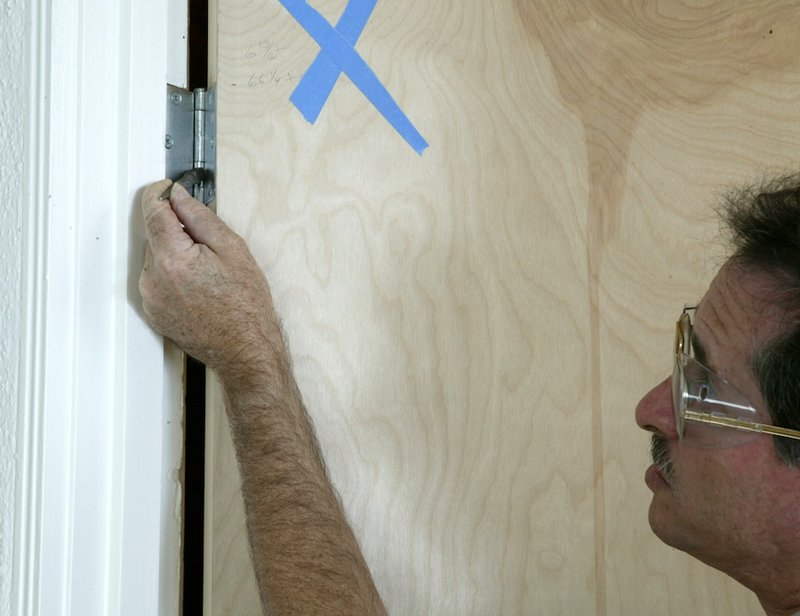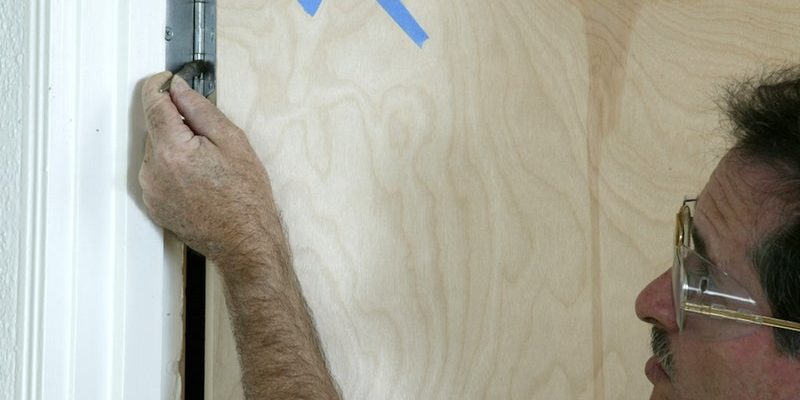
So, if you’ve got a door that doesn’t quite swing right anymore, it might just be time to take a look at the hinges. In this guide, we’ll walk through how to repair a bent door hinge, making sure you can get that door back to working order. With a bit of patience and the right tools, you can have your door operating smoothly again, like it just came from the store.
Identifying a Bent Door Hinge
Before you dive into repairs, you need to figure out if your door hinge is actually bent. A bent hinge usually shows visible signs of wear or damage. Look closely at the hinge itself—if the two plates that hold it to the door and frame aren’t aligned, or if there’s a noticeable gap, you’re probably dealing with a bend. Another clue is if your door doesn’t open and close smoothly or if it’s sitting oddly in the frame.
Here’s how you can check:
- Visual Inspection: Stand in front of your door and look at the hinge from different angles. Check if it’s leaning or twisted.
- Test the Door Movement: Open and close the door. If it sticks or creaks, that’s a sign something’s off.
- Check for Gaps: Look for any gaps between the hinge and the door or frame. If you see spaces where there shouldn’t be any, your hinge might be the culprit.
Once you’ve confirmed the hinge is bent, don’t worry; it’s a fixable issue.
Gathering the Right Tools
Before you start fixing that bent hinge, you’ll want to gather some essential tools. Think of it like preparing for a cooking recipe—you need the right ingredients to get a great result. Here’s a quick list of what you’ll need:
- Screwdriver: For removing the hinge screws. Make sure you have the right size for your screws.
- Hammer: This will help you straighten out the hinge.
- Pliers: A pair of pliers will give you the grip needed to bend the hinge back into shape.
- Lubricant: Once the hinge is fixed, a little lubricant keeps it moving smoothly.
Gather these tools before starting your repair. Having everything handy makes the process smoother and keeps you from getting frustrated halfway through the job.
Straightening the Bent Hinge
Now comes the fun part: fixing that bent hinge. Here’s a step-by-step guide to help you through this:
1. Remove the Hinge: Using your screwdriver, take out the screws holding the hinge to the door and frame. Keep the screws in a small container so you don’t lose any.
2. Inspect the Hinge: Lay the hinge flat on a hard surface and take a closer look. You should see where it’s bent.
3. Straighten It Out: Place the hinge on a solid surface, like a workbench or a block of wood. Use your hammer gently to tap the bent section back into place. If it’s really stubborn, you can use pliers for a bit more leverage.
4. Reattach the Hinge: Once it’s straightened, hold the hinge back to its original position and screw it back onto the door and frame.
Remember to be gentle with your hammering; you want to fix the hinge, not break it further.
Testing the Door Functionality
After you’ve reattached the hinge, it’s time for a test run. Open and close the door several times to see how it feels. A well-functioning door should swing open and shut with ease. If your door still sticks or feels off, don’t panic. You might need to make small adjustments.
Sometimes, a little tweak is all it takes. Use your screwdriver to tighten any loose screws. Check if the hinge aligns well with the door frame. If necessary, you can make slight adjustments to where the hinge is positioned on the door or frame to get that perfect alignment.
Preventing Future Hinge Damage
Once you’ve got your door working smoothly again, take a moment to think about how to prevent this from happening in the future. Here are a few tips to keep your hinges in great shape:
- Be Gentle: Try not to slam the door. Instead, close it gently to avoid future bending.
- Regular Maintenance: Check your hinges from time to time. Tighten screws when needed and apply lubricant every few months.
- Use Quality Hinges: If your current hinges are bending often, consider investing in higher quality ones that can withstand daily use better.
By practicing these simple habits, you can save yourself from more repairs down the line and keep your door operating like new.
When to Replace the Hinge
Sometimes, despite your best efforts, a hinge might not be salvageable. If, after straightening it, your door still isn’t functioning properly, it might be time to replace it. Signs that you may need a new hinge include:
– Severe Damage: If your hinge is cracked or has a lot of corrosion, replacement is usually the best option.
– Frequent Bending: If you find yourself repairing the same hinge over and over, consider upgrading to a sturdier type.
– Unmatched Appearance: If you’re repainting or renovating, you may want to replace the hinge for aesthetic reasons.
Replacing a hinge is just as straightforward as repairing one—just remove the old hinge and install a new one in its place, using the same steps we discussed earlier.
Repairing a bent door hinge might seem daunting at first, but with the right tools and a clear step-by-step approach, it can be an easy DIY fix. Remember, it’s all about patience and a bit of finesse. So next time you hear that door slam, you’ll know exactly what to do. With a little attention, you can keep your door working smoothly for years to come. Happy fixing!
